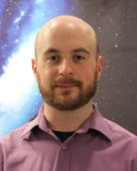
Vicky Kalogera
Daniel I Linzer Distinguished University Professor of Physics and Astronomy
Director of Center of Interdisciplinary Exploration and Research in Astrophysics (CIERA)
Largest catalog ever assembled, detailing 35 events, released today
EVANSTON, Ill. — An international team of researchers, including Northwestern University astrophysicists, has released the largest-ever catalog of gravitational-wave events.
Of the 35 new events observed between November 2019 and March 2020, 33 were likely mergers between black holes of various shapes and sizes. The other two events were likely black holes merging with neutron stars — a much rarer event. Of these rare black hole and neutron star mergers, one event appears to show a massive black hole (about 33 times the mass of our sun) merging with a very low-mass neutron star (about 1.17 times the mass of our sun). This is one of the lowest-mass neutron stars ever detected.
Since the first gravitational-wave detection in 2015, astrophysicists have detected a total of 90 events. By calculating the masses of the merging objects, astrophysicists can better understand how stars live and die and what makes them collapse into black holes versus neutron stars upon death.
“Only now are we starting to appreciate the wonderful diversity of black holes and neutron stars,” said Christopher Berry, a key member of the Laser Interferometer Gravitational-Wave Observatory (LIGO) Scientific Collaboration (LSC). “Our latest results prove that they come in many sizes and combinations. We have solved some long-standing mysteries but uncovered some new puzzles too. Using these observations, we are closer to unlocking the mysteries of how stars — the building blocks of our universe — evolve.”
The research is now available online, with two accompanying papers forthcoming. The team includes researchers from the LSC, the Virgo Collaboration and the Kamioka Gravitational Wave Detector (KAGRA) project.
An expert in gravitational-wave parameter estimation, Berry is a lecturer at the University of Glasgow and a visiting scholar at Northwestern’s Center for Interdisciplinary and Exploratory Research in Astrophysics (CIERA). Other Northwestern astrophysicists involved with the latest catalog include Vicky Kalogera, the principal investigator of Northwestern’s LSC group, director of CIERA and the Daniel I. Linzer Distinguished Professor of Physics and Astronomy in the Weinberg College of Arts and Sciences; Zoheyr Doctor, Board of Visitors Research Assistant Professor at CIERA; and Maya Fishbach, a NASA Einstein Postdoctoral Fellow and LSC member.
Albert Einstein first predicted gravitational waves in 1916, as a part of his theory of general relativity. But because the waves reaching Earth are so miniscule, it took researchers a century to build instruments precise enough to measure them.
Since the first detection in 2015 of two black holes merging, the number of detections has increased at a precipitous rate. In a matter of years, gravitational-wave scientists have gone from observing these vibrations in the fabric of the universe for the first time to now observing many events every month — sometimes even observing multiple events on the same day.
Gravitational-wave detectors operate by using high-power lasers to carefully measure the time taken for light to bounce between mirrors. In the third observing run, the gravitational-wave detectors reached their best-ever performance. To achieve this monumental progress, the pioneering instruments have been getting more sensitive thanks to a program of constant upgrades and maintenance.
“As our international network of interferometers become more sensitive and observe for longer, we are detecting more gravitational waves,” said Doctor, co-chair of the rates and populations sub-group within the LIGO-Virgo-KAGRA collaboration. “From these very short, faint signals, we can learn a lot. We’re starting to see rarer events and are beginning to unlock the diversity of black hole and neutron star mergers. Ultimately, we want to know how these exotic objects come to exist and collide with each other. These new detections are helping us zero in on that.”
According to Doctor, the detectors’ improved sensitivity is helping researchers find more mergers of lower-mass objects, which tend to be more difficult to detect. It also is helping researchers better define the boundaries of the puzzling area known as the “mass gap” — the range that lies between the heaviest known neutron star and the lightest known black hole.
“Our understanding of the properties and abundances of these lower-mass mergers has been fuzzy,” Doctor said. “Now that we have actual hard detections, we’re beginning to fill in that lower end of the mass spectrum.”
The final gravitational-wave event in the latest catalog came from two objects merging, one almost certainly a black hole (with a mass around 24 times the mass of our sun) and the other either a very light black hole or a very heavy neutron star of around 2.8 times the mass of our sun. Scientists have deduced it is most likely to be a black hole, but they cannot be entirely sure.
In August 2019, LIGO and Virgo discovered a similar ambiguous event. The mass of the lighter object is puzzling, as scientists expect that the most massive a neutron star can be before collapsing to form a black hole is around 2.5 times the mass of our sun. However, no black holes had been discovered with electromagnetic observations with masses below about five solar masses. This led scientists to theorize that stars do not collapse to make black holes in this range. The new gravitational-wave observations indicate that these theories may need to be revised.
The LIGO and Virgo observatories are currently undergoing improvement works before the upcoming fourth observing run, expected to begin late 2022. The KAGRA observatory in Japan also will join the next full observing run. Located deep under a mountain, KAGRA completed a successful first observing run in 2020, but has yet to join LIGO and Virgo in making joint observations.
As more detections are confidently added to the gravitational-wave catalog, researchers are learning more and more about these astronomical phenomena. Before the next observing run, scientists will be busy further analyzing the existing information, learning more about neutron stars and black holes, and searching for new types of signals hidden in the data.
“It turns out that the gravitational-wave universe is incredibly exciting,” Fishbach said. “Our upgraded detectors will be able to catch quieter signals, including black holes and neutron stars that merged even farther away, with signals from billions of years ago. I can’t wait to discover what else is out there.”
This material is based upon work supported by the National Science Foundation's (NSF) LIGO Laboratory, which is a major facility funded by the NSF. LIGO is operated by Caltech and MIT, which conceived of LIGO and led the Advanced LIGO detector project. Financial support for the Advanced LIGO project was principally from the NSF with Germany (Max Planck Society), the U.K. (Science and Technology Facilities Council) and Australia (Australian Research Council-OzGrav) making significant commitments and contributions to the project. Approximately 1,400 scientists from around the world participate in the effort to analyze the data and develop detector designs through the LIGO Scientific Collaboration, which includes the GEO Collaboration. A list of additional partners is available at https://my.ligo.org/census.php.
The Virgo Collaboration is currently composed of approximately 650 members from 119 institutions in 14 different countries including Belgium, France, Germany, Hungary, Italy, the Netherlands, Poland and Spain. The European Gravitational Observatory (EGO) hosts the Virgo detector near Pisa in Italy, and is funded by the Centre National de la Recherche Scientifique (CNRS) in France, the Istituto Nazionale di Fisica Nucleare (INFN) in Italy and Nikhef in the Netherlands. A list of the Virgo Collaboration groups can be found at http://public.virgo-gw.eu/the-virgo-collaboration. More information is available on the Virgo website at http://www.virgo-gw.eu.
The KAGRA detector is located in Kamioka, Gifu, Japan. The host institute is the Institute of Cosmic Ray Researches (ICRR) at the University of Tokyo, and the project is co-hosted by National Astronomical Observatory in Japan (NAOJ) and High Energy Accelerator Research Organization (KEK). KAGRA completed its construction in 2019, and later joined the international gravitational-wave network of LIGO and Virgo. The actual data-taking was started in February 2020 during the final stage of the run called "O3b." The KAGRA collaboration is composed of over 470 members from 11 countries/regions. The list of researchers is available from http://gwwiki.icrr.u-tokyo.ac.jp/JGWwiki/KAGRA/KSC/Researchers. KAGRA information is at the website https://gwcenter.icrr.u-tokyo.ac.jp/en/.
<iframe width="560" height="315" src="https://www.youtube.com/embed/zETgav4Jzgk" frameborder="0" allow="accelerometer; autoplay; encrypted-media; gyroscope; picture-in-picture" allowfullscreen></iframe>
Please credit image to "LIGO-Virgo-KAGRA/Aaron Geller/Northwestern University"

Daniel I Linzer Distinguished University Professor of Physics and Astronomy
Director of Center of Interdisciplinary Exploration and Research in Astrophysics (CIERA)


